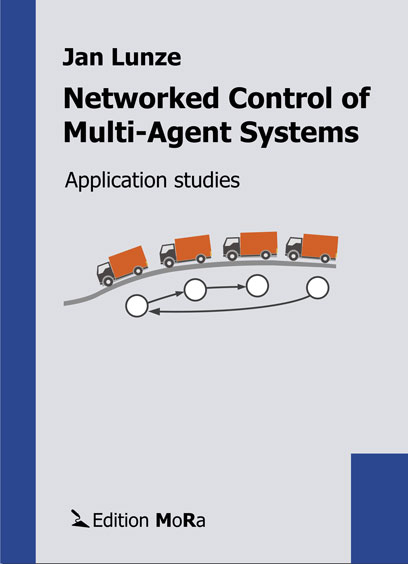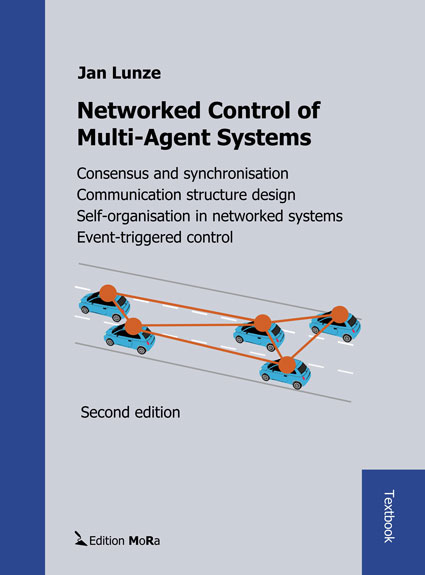Jan Lunze
Networked Control of Multi-Agent Systems
Contents
What is an appropriate communication structure for a given control task?
This question has to be answered to understand how networked controllers can take advantage of the flexibility of modern communication systems. The book introduces network thinking as a guiding principle to deal with the overall system as an interconnection of controlled agents and to answer the question why certain information structures are more favourable than others.
The textbook
- demonstrates networked control by 82 numerical examples,
- includes 112 exercises, most of them with solutions,
- provides supplementary material on matrix algebra, probability theory and the analysis of graphs with MATLAB.
Preface
Highlights of the textbook
Table of content
Sample chapter
Errata

Supplementary material
Preface
Table of content
The application studies include
- Distributed algorithms for sensor networks
- Synchronisation of van der Pol oscillators
- Synchronisation phenomena in power networks
- Self-organising leader selection in truck platoons
- Mu-split braking of a vehicle
- Motion on demand: Self-service bike hiring
- Event-triggered control of a thermo-fluid process
- Networked control of an irrigation system
- Nonlinear vehicle platoons

Additional information
Flyer

